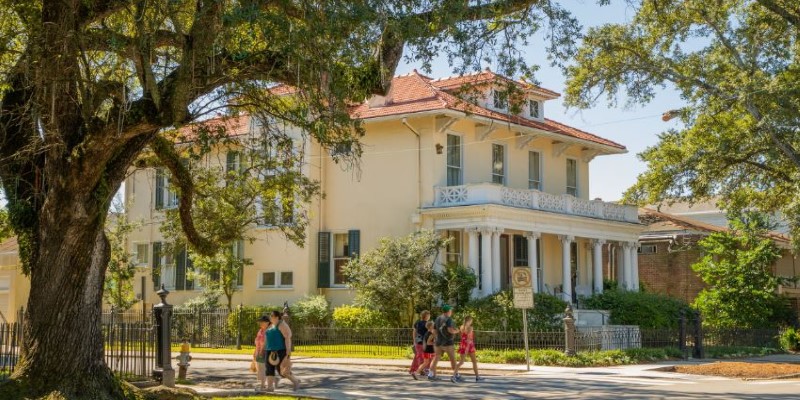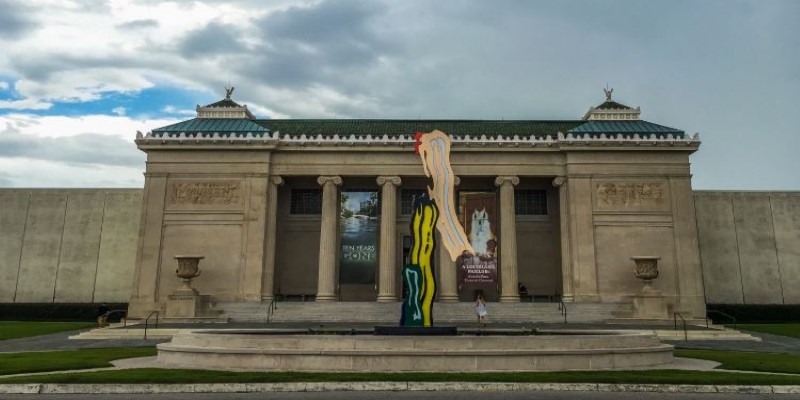New Orleans Unveiled: Must-See Places Beyond Mardi Gras
New Orleans is famous for Mardi Gras, and for good reason—it’s a spectacle unlike any other. But to think that the city is only about wild parades and colorful beads is to miss its deeper magic. Beneath the festive chaos is a place with a soul, a city that moves to the rhythm of jazz, carries the weight of history, and welcomes everyone with open arms. Whether you’re walking through its historic districts, savoring the flavors of Creole cuisine, or listening to music spill from an open doorway, New Orleans offers an experience that lingers long after you leave.
If you happen to visit New Orleans outside the Mardi Gras season or are looking for more of what the city has to offer, there is no lack of unforgettable ways to explore. From timeless architecture to secretive courtyards, from the sounds of brass bands to the scent of freshly baked beignets, there's really nothing that makes New Orleans what it is.
The French Quarter: Where the City’s Heart Beats
The French Quarter is more than just Bourbon Street. It’s the oldest part of the city, and every corner tells a story. The streets are lined with Spanish-style buildings, their wrought-iron balconies draped with green vines and flickering gas lanterns. Walking through this district feels like stepping into a different era.
Begin the day at Jackson Square, where artists paint beneath ancient oak trees and street performers add color and sound to the area. Over the entrance is the mighty St. Louis Cathedral, which dominates one side of this vibrant area, possibly New Orleans's most recognizable landmark. Surrounding the square are some of the country's oldest historic buildings in the Pontalba Apartments.
Wander from there into quieter side streets. There's much to explore in Royal Street itself—antique shops, art galleries, and the occasional sound of live jazz drifting out of an open doorway. And for more than a superficial peek at the past, try a visit to the Historic Voodoo Museum or join a ghost tour; there is no lack of tales in New Orleans of things supernatural.
Of course, no visit to the French Quarter is complete without indulging in the city’s famous food. Café du Monde serves up hot, powdered sugar-dusted beignets that pair perfectly with chicory coffee. If you’re in the mood for something heartier, a bowl of seafood gumbo or a plate of jambalaya will hit the spot.
The Garden District: A Walk Through Elegance
If the French Quarter is the city’s wild spirit, the Garden District is its refined side. Located just a short streetcar ride away, this neighborhood feels like another world. Grand mansions sit beneath towering oak trees, their porches lined with rocking chairs and ceiling fans spinning lazily in the heat.

A walk through the Garden District is a slow, immersive experience. You’ll pass homes that have stood for over a century, each one a masterpiece of Greek Revival, Victorian, or Italianate design. Some, like the famous Cornstalk Fence House, have stories of their own.
One of the most peaceful places to visit here is Lafayette Cemetery No. 1, where above-ground tombs form eerie, quiet pathways. Unlike the city’s busier cemeteries, this one allows visitors to take their time, soaking in its unique beauty.
For a bite to eat, stop by Commander’s Palace, one of New Orleans’ most beloved restaurants. Whether you go for a classic Creole dish or just a drink in their elegant setting, the experience is worth it.
Top of Form
Live Jazz: The Soundtrack of New Orleans
Music is everywhere in New Orleans, and nothing captures the city’s spirit quite like live jazz. You don’t have to search hard to find it—walk through the French Quarter at night, and you’ll hear the music pouring from open doors.
One of the best places to experience it is Frenchmen Street, a lively strip just outside the main tourist areas. Unlike Bourbon Street, which can be overwhelming, Frenchmen Street offers a more authentic music scene. Venues like The Spotted Cat and Blue Nile host incredible musicians every night, with sounds ranging from traditional jazz to blues and funk.
If you prefer something more relaxed, head to Preservation Hall. This historic venue keeps New Orleans’ jazz traditions alive with intimate, no-frills performances. There’s no flashy stage—just musicians playing their hearts out, carrying on a legacy that has defined the city for generations.
Top of Form
Bottom of Form
For a unique experience, take a ride on the Steamboat Natchez. This historic paddlewheel boat offers jazz cruises along the Mississippi River, combining live music with breathtaking views of the city skyline.
Beyond the City: Exploring New Orleans’ Natural Side
While the city itself is full of history and culture, many visitors overlook New Orleans's other side—the beauty of its surrounding nature.

City Park, one of the largest urban parks in the country, is a great place to start. With ancient oak trees draped in Spanish moss, peaceful lagoons, and walking trails, it’s a breath of fresh air away from the busy streets. The park is also home to the New Orleans Museum of Art, which features a mix of classic and contemporary works.
For a more adventurous outing, take a swamp tour. Just outside the city, the bayous offer a glimpse into Louisiana's wild side. Airboat rides and kayak tours take visitors through winding waterways where alligators sunbathe on the banks and herons glide over still waters. The swamps feel untouched by time, a reminder of the deep, untamed beauty that surrounds the city.
Conclusion
New Orleans lingers in your mind long after you leave. It’s a city of music, history, and soul, where every street hums with life. Beyond the Mardi Gras parades, there’s a quieter magic—the charm of the Garden District, the timeless sound of live jazz, and the whispers of the past in its old cemeteries. Whether you’re savoring a beignet, drifting through the bayou, or losing yourself in a melody on Frenchmen Street, New Orleans offers an experience that feels both timeless and alive. It’s not just a place to visit—it’s a place to feel, to remember, and to return to.










